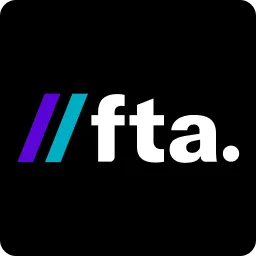Enterprise SEO 2026: Building Scalable Systems for AI-Generated Search
What is enterprise SEO
Enterprise SEO is the practice of building search visibility across large and complex digital ecosystems. It applies to organizations that manage thousands of web pages, products, or regional sites.
The focus is on designing systems that make an entire digital presence discoverable, trusted, and consistent at scale.
This approach connects architecture, data, automation, and analytics into one operating model. The objective is to help search engines and AI systems accurately read, interpret, and trust your brand.
Enterprise SEO turns fragmented digital efforts into a coordinated network of performance, where every page contributes measurable value.
When done right, it becomes the link between brand authority, data quality, and long-term organic growth.
At FTA Global, we define Enterprise SEO as the operating system that governs content, data, and structure at scale so that machines can find, trust, and cite you. It aligns technology, governance, and proof, and not just copywriting.
What’s the difference between enterprise SEO & traditional SEO
Enterprise SEO differs from traditional SEO in several key terms, as explained below -
1. Scale and Structure
It manages thousands of URLs, often across products, regions, and business units. Each must be discoverable and aligned under a single technical framework.
2. Technical Depth
The focus moves from single-page optimization to architecture design. Crawl budget, schema precision, and index control drive results more than copy updates.
3. Automation and Intelligence
Automation replaces manual fixes. Dashboards, structured data, and rule-based updates keep large ecosystems consistent without human rework.
4. Collaboration and Governance
SEO becomes an enterprise process. Product, content, and development teams share ownership through workflows and review systems that prevent conflicts.
5. Brand Authority and Consistency
The goal is not just ranking higher but being recognized as the most accurate and reliable source across markets and platforms.
Are blue links still the primary route to discovery in 2026
The short answer is no. Search discovery has migrated from the scroll zone to the answer layer - the space where AI summaries, answer boxes, and voice assistants compress attention.
When AI Overviews appear, they absorb the first scroll of user intent. Fewer people click; more get their answer inside the summary. But what matters is not the traffic loss, it’s who gets cited in the answer. That’s where brand exposure, trust, and even conversions now originate.
Across informational and comparison queries, AI-generated answers now occupy a growing share of above-the-fold results. The top organic listing can lose more than a third of its click-through rate when an AI summary is present.
This new dynamic forces leaders to measure presence instead of position. Your visibility depends on whether your brand is named, quoted, or linked within the AI response.
Action: Audit your top fifty buyer questions. Check if your content or brand is cited inside AI-generated answers. Those citations are your new first-page presence.
How AI-generated answers reshape click distribution

(The chart above compares user click behavior across queries with and without AI summaries.)
What did we infer from this insight:
- Without AI summaries, the top three organic results capture about 55% of total clicks.
- When AI summaries appear, that share drops to roughly 20%, while 60% of attention shifts to the AI answer box itself.
- Branded citations within the AI box see the highest recall and assisted conversions, proving that answer inclusion now outranks link position.
Replacing the classic keyword brief at enterprise scale
The keyword brief is obsolete. It cannot govern the complexity of machine-interpreted discovery. What replaces it is a unified operating asset, which we call the Answer Blueprint.
The Answer Blueprint defines each question as a discrete, structured unit. It specifies the verified facts, reviewers, data sources, and the validation date. It forces teams to produce machine-ready content, not prose that only humans can parse.
The new three-part system
1. Answer Blueprint
Every critical buyer question becomes a single source of truth. It documents:
- The exact phrasing of the user question.
- Key factual statements to be lifted into AI responses.
- Source links, reviewers, and last verified date.
2. Proof Pack
A short claim table with facts and citations that models can safely quote. It’s your factual fingerprint across the web.
3. Distribution Card
Defines where each answer lives, your leading site, help docs, partner hubs, or data files, ensuring accessibility across the open web.
This framework transforms content production into a verifiable, auditable workflow. It enables global teams to update, validate, and publish at scale without fragmenting authority.
Action: Replace your keyword brief with the Answer Blueprint and Proof Pack. They become the default brief for every high-intent topic in 2026.
Which metrics matter when rank is not the scoreboard
Enterprise SEO must evolve beyond vanity ranks. AI-driven discovery requires a measurement system that reflects visibility inside summaries and assistants.
The four metrics that now matter most:
1. Answer Presence Rate
How often does your brand appear inside AI summaries for your key questions? This is your new visibility index.
2. Citation Share
The percentage of answer boxes that credit your domain or entity as a cited source. This measures trust distribution across competitors.
3. Accuracy Score
Alignment between the AI-generated response and your published source of truth. High accuracy reinforces authority and reduces the risk of misinformation.
4. Latency
The time it takes for updated facts to propagate into AI summaries. Slow propagation signals weak data connectivity or inconsistent markup.
These metrics together define your Answer Performance Dashboard.
To operationalize them, integrate structured logging of citations and weekly answer snapshots. Over time, this builds a longitudinal record of presence, trust, and data health.
Stand up a weekly dashboard that tracks presence, citation share, accuracy, and latency, not just rank.
What content and data structures help models trust and quote you
AI systems trust what they can verify. That means your pages must expose short, structured, and source-linked statements that models can lift and reuse.
Four essential patterns
1. Short factual statements with visible sources
Every key sentence should reference a public source of proof, internal documentation, pricing pages, or verified partner data.
2. Tables for specifications, limits, and comparisons
Tables create predictable patterns that large language models can parse. They are more easily extracted than long paragraphs.
3. Natural-language FAQs
Rewrite core queries in the same phrasing buyers use. These act as alignment points for model retrieval and improve citation accuracy.
4. Author and reviewer metadata
Visible authorship and last verified dates add traceability. Models favor content with freshness and accountability markers.
At scale, these practices convert your site into a machine-readable knowledge layer. It signals to AI systems that your data is structured, traceable, and reliable, the prerequisites for citation.
Publish a machine-readable facts block on every core page. Link it to a central source-of-truth index.
Which enterprise stack scales AI-era SEO without tool bloat
Most enterprise teams today operate across ten or more disconnected tools. In the AI era, that’s a liability. What’s required is a lean, interconnected stack that measures and improves answer presence without adding noise.
The essential layers of the 2026 enterprise SEO stack
1. Discovery and Tracking Layer
Tracks which buyer questions trigger AI summaries, and where your brand appears. The focus is on visibility cohorts, feature exposure, and answer coverage.
2. Technical Evaluation Layer
Analyzes how AI summaries interact with your content architecture. It identifies missing markup, crawl gaps, and coverage by intent type.
3. Marketing Operations Layer
Centralizes workflows, approvals, and version control. This ensures that Answer Blueprints, Proof Packs, and structured data updates move in sync across teams.
4. Schema and Glossary Management
Maintains a single index of entities, terms, and relationships, your brand’s shared dictionary for AI consumption.
Each layer is minimal but tightly governed. The goal is not to expand the tool count but to reduce friction between visibility and validation.
Build your 2026 plan around these four layers. Integrate data flow across them and retire redundant point solutions.
The FTA ninety-day plan to operationalize enterprise SEO for AI-generated search
Every enterprise can move from insight to implementation within ninety days. Here’s the action plan we use to operationalize AI-era SEO.
Weeks 1-2: Map discovery and citation gaps
Identify your top fifty buyer questions. Audit whether your pages are present and cited in AI-generated answers, and document citation gaps and conflicting data.
Weeks 3-4: Ship foundational assets
Create ten Answer Blueprints and Proof Packs. Assign reviewer names and dates. Publish facts blocks and connect them to your index of truth.
Weeks 5-6: Instrument the new metrics
Wire your analytics or dashboard to capture presence, citation share, accuracy, and latency. Schedule a weekly review as part of your content workflow.
Weeks 7-8: Resolve inconsistencies
Align all product, help, and pricing pages. Remove contradictions and republish with visible change logs.
Weeks 9-12: Scale and socialize
Expand to twenty-five questions. Place your verified content across partner hubs. Train sales and support teams on new answer talk tracks.
This sprint gives leadership tangible results within a quarter: measurable answer presence, reduced latency, and improved accuracy.
Assign ownership across the CMO, content lead, product owner, legal reviewer, and data analyst. Hold a thirty-minute weekly answer review to track proof and propagation.
The enterprise SEO mandate for 2026
By 2026, enterprise search visibility will be earned through data integrity and structured proof, not keyword density. The AI-generated search layer is already the first screen of discovery. Winning in it requires systems thinking, not tactical optimization.
At FTA, we believe every brand must evolve from publishing pages to publishing proofs. Clean facts, auditable sources, and consistent entity signals are what make you visible, cited, and trusted by machines.
The enterprise that governs this system early doesn’t just protect its pipeline; it owns the conversation every time a buyer asks a question.
Do you want more traffic?

How to Scale Personalisation in ABM Without Losing Focus?
.png)
Why Small Tasks Are the Next Big Revolution in Business Efficiency?











